15.12.2016, Johanna Järvinen-Taubert
Latest PISA results – Finnish response
OECD announced its latest PISA results few weeks ago. PISA is among the many international rankings, in which Finland has received excellent results, so naturally the latest results are of big interest both in Finland and in other countries.
PISA assesses the learning outcome of students aged 15 in mathematics, science and reading literacy in OECD and other developed countries. In latest review Finland is now ranked 12th in math, fifth in science and fourth in reading. Compared to other OECD countries the results are as follows: Finnish pupils are the third best in science, the second best in reading and in the 7th position in mathematics. There are small shifts in latest ranking compared to the previous one, but no remarkable change.
Nevertheless, in Finland an active discussion started over the results immediately after they were released. As a surprise to many foreigners, Finns are not really worried if our position in ranking changes with few points. (In fact, education policy in Finland is not targeted to do well in PISA at all. When the first PISA results were published and Finland was the number one in the World, most Finns were convinced it had to be a mistake 😉 ).
But the results still raised national concern. What are the Finns worried about? The very basis of Finnish education system has always been equality and equity. We have been proud that all the children in Finland have a genuine possibility to learn, achieve and success despite of their social background, wealth of the family, place of residence etc. Now there are small signs that this may be changing.
There are at least three factors that seem to be affecting the learning outcomes of Finnish basic education pupils. First: gender. Finnish girls are the second best in natural sciences, but the boys are in the 10th position in the world. In fact, Finland is the only country in the world, where girls outperform boys in science.
Why is that? I follow several different discussion forums where Finnish teachers and parents are discussing this topic and trying to find a reason for the result. The strongest theory at the moment is related to the diminished role of reading for pleasure among boys. Finland has shined with children’s excellent reading skills and reading has been popular among young people. Now the situation has changed. The “screen time” with media (especially smart phones) has increased a lot among children and the time for reading has decreased accordingly. (Unfortunately, many other countries are witnessing this same phenomenon of digital distraction among their youth.) Especially boys read less that they used to. Reading literacy and fluency are the foundation for understanding all other subjects, including science. The big question in Finland is at the moment: how can we increase the popularity of reading again?
Two other factors that seem to be affecting the Finland’s results are the educational background of parents and the place of residence. Even though the differences are small in global perspective and Finnish schools are still among the most homogeneous in the world, Finns take this very seriously. We have had a very equal, homogeneous education system that has provided all children equal possibilities despite of their background or place of residence. Has the situation changed somehow is under an active debate in Finland right now. There is an intensified public conversation at the moment on making the education system serve everyone better.
Actually Finland acknowledged the need to develop our basic education long before the PISA results. Finland started to renew it’s National Core Curriculum already several years ago. This autumn the new curriculum was put to use and results are yet to be seen. We are enthusiastic about it and eager to see how it changes the basic education in Finland. The new curriculum includes more student-centered pedagogies, strengthened student engagement in school, more physical activity for all students, and more technology in classrooms. As Harvard professor Pasi Sahlberg has said it: “The Finnish way of thinking is that the best way to address insufficient educational performance is not to raise standards or increase instruction time (or homework) but make school a more interesting and enjoyable place for all. Raising student motivation to study and well-being in school in general are among the main goals of current education policy in Finland.”
It’s not only a question about international rankings, but also how and what for we educate our children. Finland still remains one of the highest-performing school systems in the world. In global perspective our system is very competitive. What is interesting is how do we do it. Finland continues to be an interesting example for others because in many ways its school system is so different compared to other countries that are doing very well in PISA.
Finland’s education system differs from most of the other countries: the education system is the most cost-efficient , it allows children to be children, it gets excellent learning outcomes without extreme competition or pressuring or prepping children, and it aims to wider competences than measured in international rankings. Most of what Finland does is not shown in PISA at all. There is strong request that have to maintain and further develop those things that make our system so unique and successful.
What amazes foreigners in Finnish education are not the outstanding international rankings. Once foreign people visit our schools and get familiar with the principles behind it, they are awestruck by the “less is more” –principle, the relaxedness, the joy of learning, the amount of practical (non-academic) subjects, highly regarded teaching profession, strong focus on well-being and holistic child development, alternative models of accountability etc. An American principal that visited Finnish schools was amazed by the “flow” he witnessed among Finnish students while they were studying. Chinese teachers saw “harmony” as the key concept in Finnish society and education. Come and see it yourself!
Yours sincerely,
Johanna
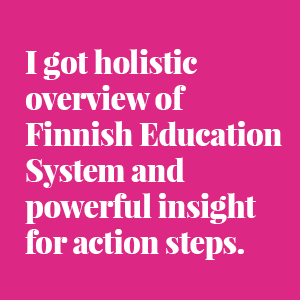

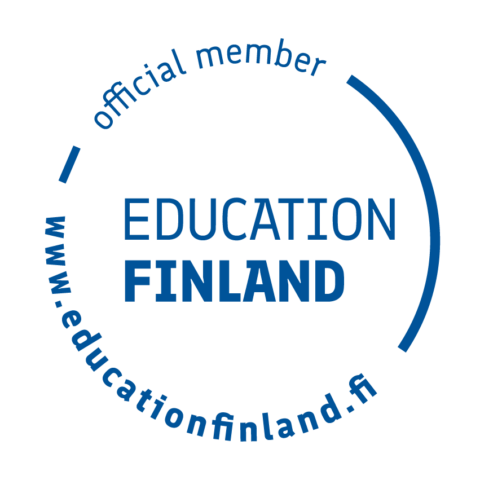
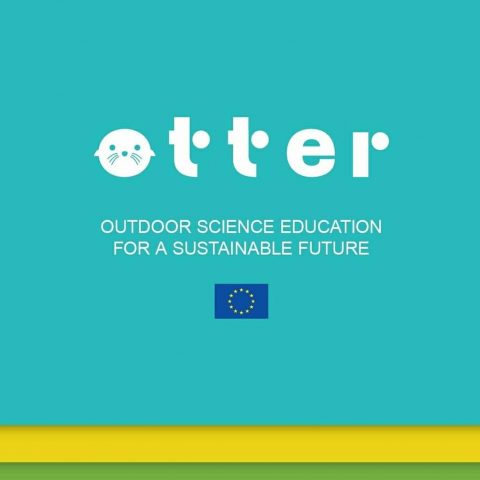





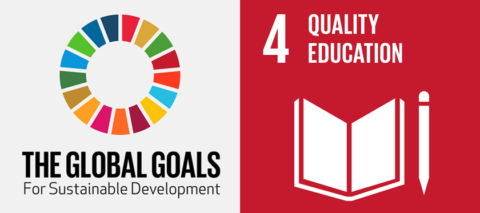

Follow us: